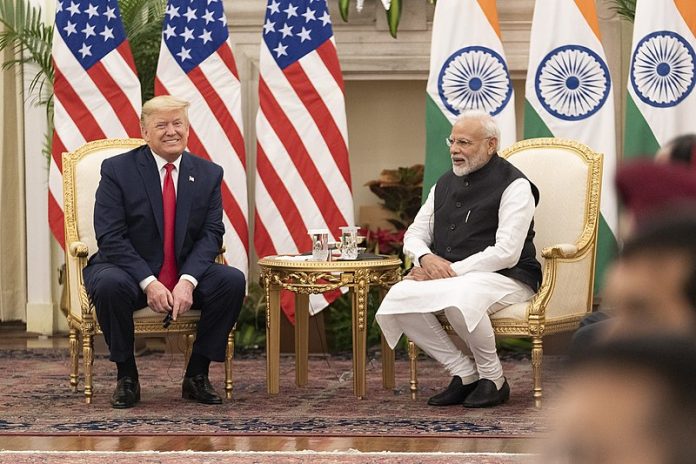On Oct. 27, India and the United States cemented their defence partnership by signing BECA (Basic Exchange Cooperation Agreement). On the occasion of the third 2+2 Dialogue held in New Delhi, the Indian and U.S. Foreign and Defence ministers inked a key defence deal that permits India access to classified U.S. geospatial and GIS data (Geographic Information System).
In the backdrop of the U.S. presidential elections and India awaiting mutual withdrawal of troops with China along the L.A.C. (Line of Actual Control), in-person meetings testify deepening defence relations between New Delhi and Washington. The coming of age defence deal has witnessed other significant foundational agreements preceding an important bilateral landmark in strategic congruence such as BECA.
Charting the Journey of India-U.S. Foundational Agreements
The seeds of strategic ties were sowed in the late 1990s with the Jaswant Singh-Strobe Talbott dialogue as well as President Bill Clinton’s visit to India in 2000. Among the foundational agreements that were signed, GSOMIA (General Security of Military Information Agreement) inked in 2002 was the first. The agreement guaranteed the protection of any classified information technology that the two countries shared. The agreement kick-started interoperability between militaries and guided future sale and transfer of U.S. arms to India.
The second foundational agreement to be signed was in 2016; LEMOA (Logistics Exchange Memorandum of Agreement) gave both the countries access to each other’s military facilities. The deal underwent several rounds of negotiations and formalizes an arrangement that was already in practice in an ad hoc manner. LEMOA is the Indian-specific version of LSA (Logistics Support Agreement) and facilitates using each other’s military bases for logistical support and essentially covers areas such as port calls, joint exercises, humanitarian assistance and disaster relief. There was a lot of back and forth regarding the agreement as it fell short on support from some factions of India’s political circles; but as China’s presence in the Indo-Pacific kept growing, it necessitated an agreement such as the LEMOA. The agreement has potential to propel the U.S. to set foot in India’s decision making circle by permitting the synchronization of systems which would be a cause of concern for India, as with any sovereign country. American and Indian viewpoints are not particularly aligned with respect to countries like Afghanistan and Iran. Even in the case of China, India’s approach is relatively less confrontational than the United States. What is perhaps essential to understand is that the agreement does not obligate India to provide logistics to U.S. vessels. For instance in the time of war, where the U.S. is confronting a particular country and is in need of any requirement under the agreement, India has an option of refusing a provision if the U.S.’s stance does not serve India’s national interest.
The inaugural 2+2 meeting in 2018, was earmarked by the signing of COMCASA (Communications Compatibility and Security Agreement). This was an India-specific version of CISMOA (Communication and Information Security Memorandum of Agreement) that guarantees the U.S. to send India encrypted and secure communication systems. This means that the military leaderships of both countries can communicate with each other through secure means during peacetime and wartime. BECA, the fourth agreement, facilitates navigation and classified satellite data. India will get real time access to U.S. geospatial intelligence, which therefore enhances accuracy of automated weapons systems like missiles and drones. Having access to data itself will not ensure accuracy; the missile navigation systems must be compatible with the usage of highly accurate data.
The signing of BECA is a significant tributary of a larger bilateral defence-scape as illustrated by the three previous agreements. The agreements undoubtedly signal trust between the two democracies, particularly with regard to sensitive entities such as sharing of military information systems.
The geopolitical environment accompanied by the complexities of the Indo-Pacific have facilitated an upward trajectory for India-U.S. defence ties which has paved way for a key defence deal and could possibly set the ball rolling for the enhancement of future strategic ties. However, apart from LEMOA, all other agreements flow one directionally; i.e from the United States to India which represents the asymmetry in the relationship with respect to the four agreements. Moreover, while all four agreements are a testament to increasing cooperation and military interoperability between New Delhi and Washington, it does not necessarily designate compliance and obligation to provide a requirement on either side. Nevertheless, BECA along with the other agreements earmark the positive progression of bilateral defence-ties and represents seamless collaboration, but much is yet to be seen on how India decides to finesse these agreements into its larger stratagem.
The views and opinions expressed in this article are those of the author.

The author is a freelance strategic analyst and has an M.A. in Geopolitics and International Relations from Manipal Academy of Higher Education, Manipal, India.


